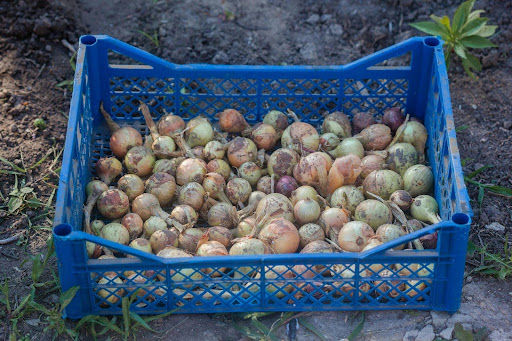Risks in Controlled Environment Agriculture Growing
- Patrick Gordon

- Feb 2, 2024
- 4 min read
Updated: Feb 7, 2024

Controlled Environment Agriculture (CEA) utilizes technology to create a climate controlled indoor growing space. Farms that practice CEA can expand growing seasons, or grow year-round, even in areas with harsh winter conditions like Michigan. These practices can be beneficial in multiple ways beyond extending the growing season. Farms that grow in a controlled environment may be able to limit many produce safety concerns that are associated with traditional agriculture; however CEA does come with a new set of produce safety concerns that need to be addressed.
Many CEA growing operations aim to utilize the greatest amount of space possible. In doing so, plants are grown at every level of the building, including areas close to the ground. These lower growing areas can be especially problematic when located directly next to walkways. Anybody walking by with contaminated footwear could contaminate the plants by spreading debris, or if the floors are wet, and they frequently are in these operations, splashing contaminated water onto the plants. This is especially concerning when the harvestable portion of the crop is present. Cross-contamination risks can be minimized by requiring workers and visitors use dedicated clean footwear, or booties when walking in production areas. Keeping the floor of the building dry, free of debris and clean and sanitized will also greatly reduce the risk of cross contamination.
Growers may overlook their nutrient solution as a source of contamination. Many times, this is seen as the way plants are receiving nutrients and water but not as a produce safety risk factor. A lot of CEA operations work in closed-loop systems with open water reservoirs or water delivery systems. If one of these were to be contaminated the entire section of the water delivery system will be as well, potentially contaminating the entire crop it is feeding if splashing or contact of the contaminated water occurs.
There are many ways to minimize the risk of cross contamination. Developing ways to cover water reservoirs and water delivery systems will help immensely. Training workers on best sanitization and hygiene practices, and proper harvesting will also help reduce risks. This includes how to properly clean and sanitize all equipment and food contact surfaces especially the floor around the water reservoir and water delivery system, and how to harvest without splashing or dripping on other plants waiting for harvest. Splashing of water or any other debris from the floor or other areas of the grow operation while cleaning could lead to a contaminated harvest.
CEA spaces usually have joints or structures on the ceiling which can be problematic. Many times, these are connecting greenhouse sections or holding up the roof. Problems occur when these areas collect condensation, further issues arise when gutters or other practices used to prevent condensation are neglected. Condensation will collect any debris or microorganisms that it meets before dripping onto the crop. Gutters at joints or anything else used for condensate deflection can become mildewy or moldy if neglected for too long. If these areas in the grow operation are not serviced regularly, they can also pool condensation, spilling over when too much is collected.
Farmers growing indoors need to be aware of where condensation will collect above their production areas and take the appropriate actions to prevent it from contacting the harvestable portion of the crop. When using gutters or other ways to deflect the condensation it is important to have standard operating procedures to monitor, clean and sanitize, and adjust accordingly. This may be a clean break when cropping out, or a weekly task assigned to a specific person based on the need of the farm. Making sure everything stays at the right angle to route the condensation and not pool will prevent a lot of issues as well.
Some markets like the look of herbs or greens packaged with roots intact. This creates additional produce safety risks. When packaged this way the nutrient solution, and the growing medium if used, will likely contact the portion of the crop that will be eaten. it is especially important to make sure that the water delivery system is free of contamination in growing operations that are packaging in this manner. If there is any contamination by microorganisms like Listeria or E. coli it will be spread to each package through water on the root systems. To prevent this, farmers must be minimizing produce safety risks by developing standard operating procedures addressing the risks outlined above, additionally farms packaging like this should be testing their water immediately prior to harvest to make sure there are no dangerous microorganisms living in the water delivery system.
While controlled environment agriculture operations allow farms to extend growing seasons and limit many produce safety risks they still need to be monitored and managed appropriately. Creating standard operating procedures to address the unique produce safety risks involved in CEA operations will help to prevent getting consumers sick. If you would like assistance with identifying and addressing produce safety risks in a controlled environment agriculture operation reach out to your produce safety technician, they provide free and confidential technical assistance to Michigan farms. The Produce Safety Technician for your region can be found on this map.
Written by Patrick Gordon, Produce Safety Technician


